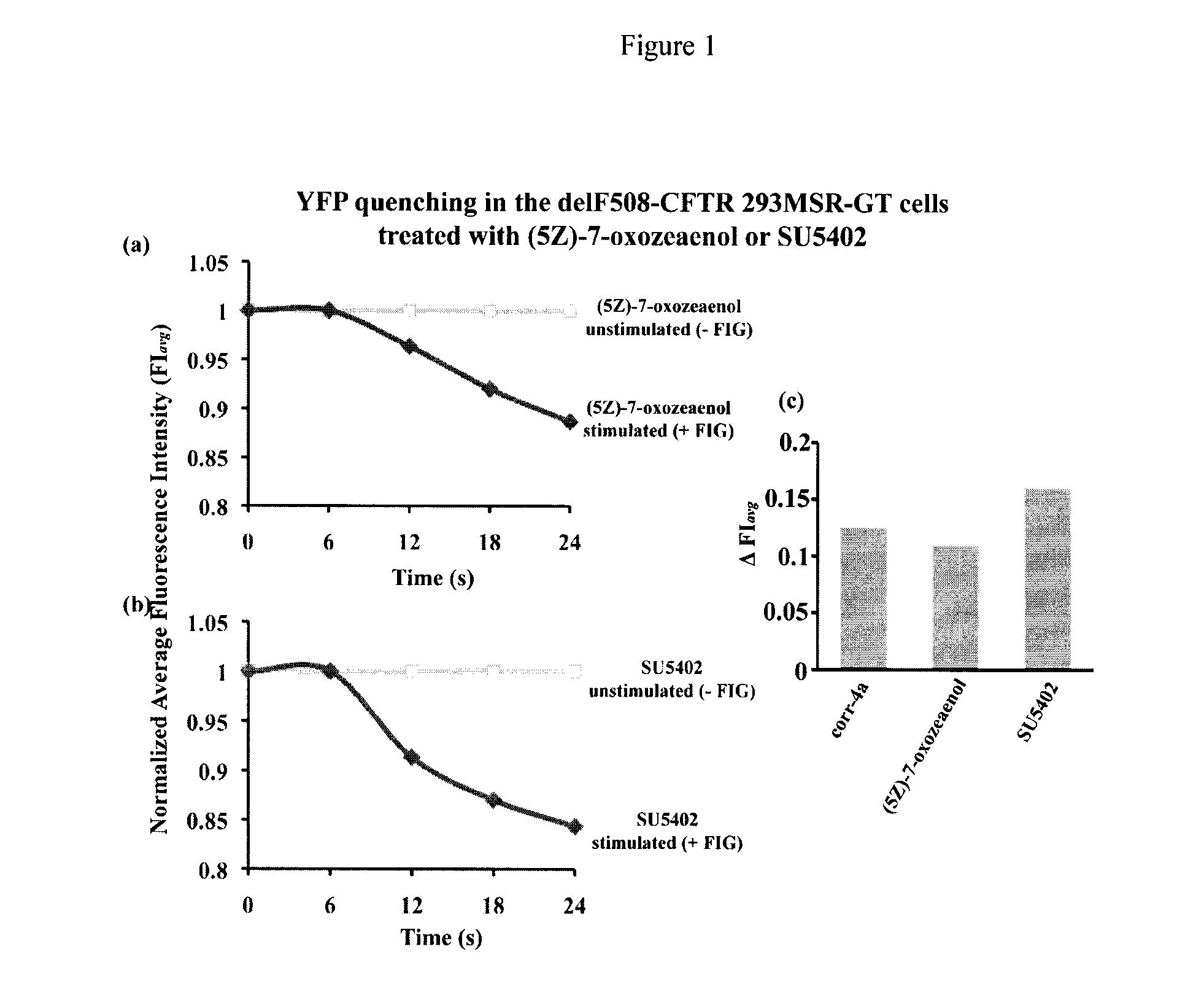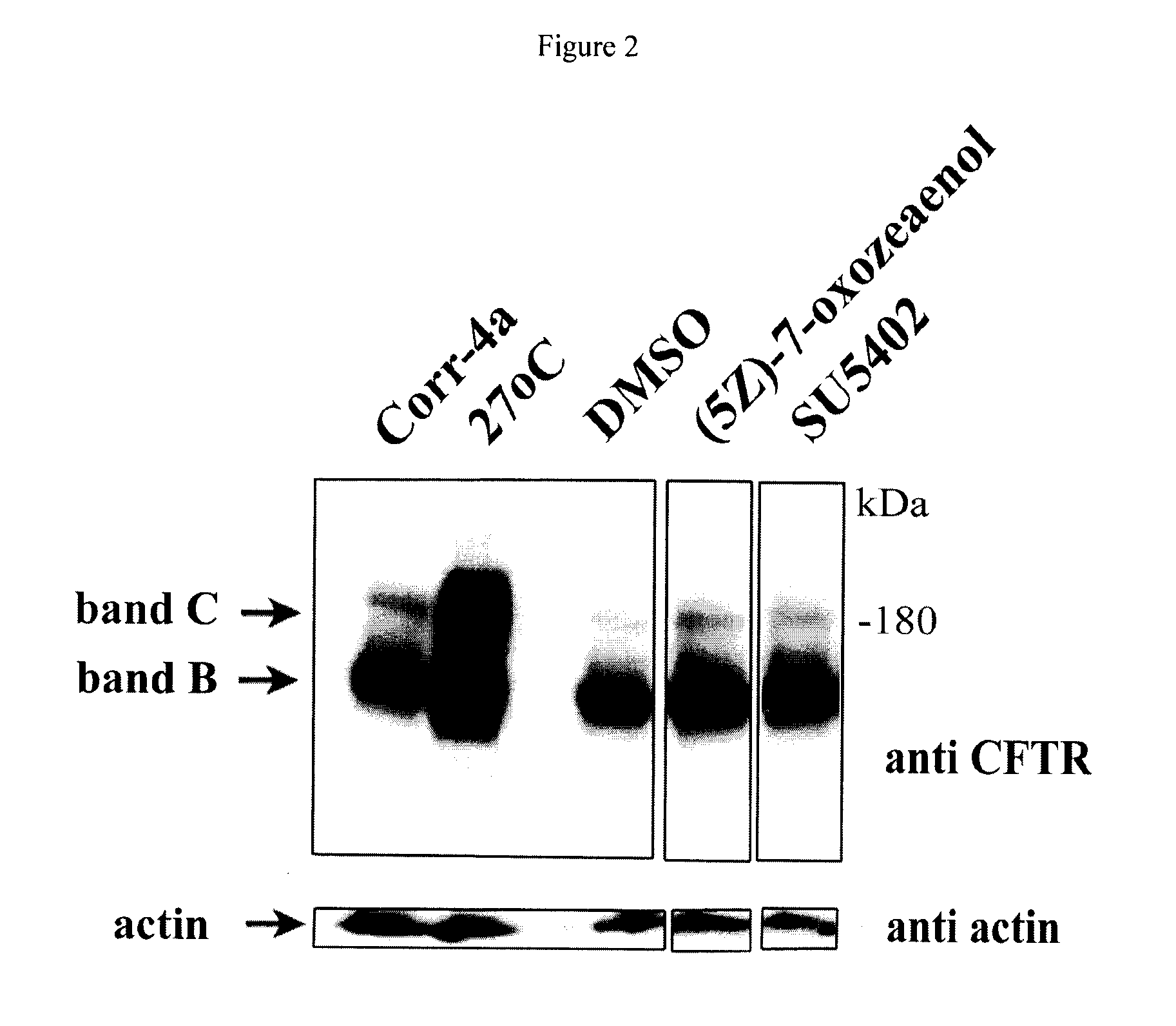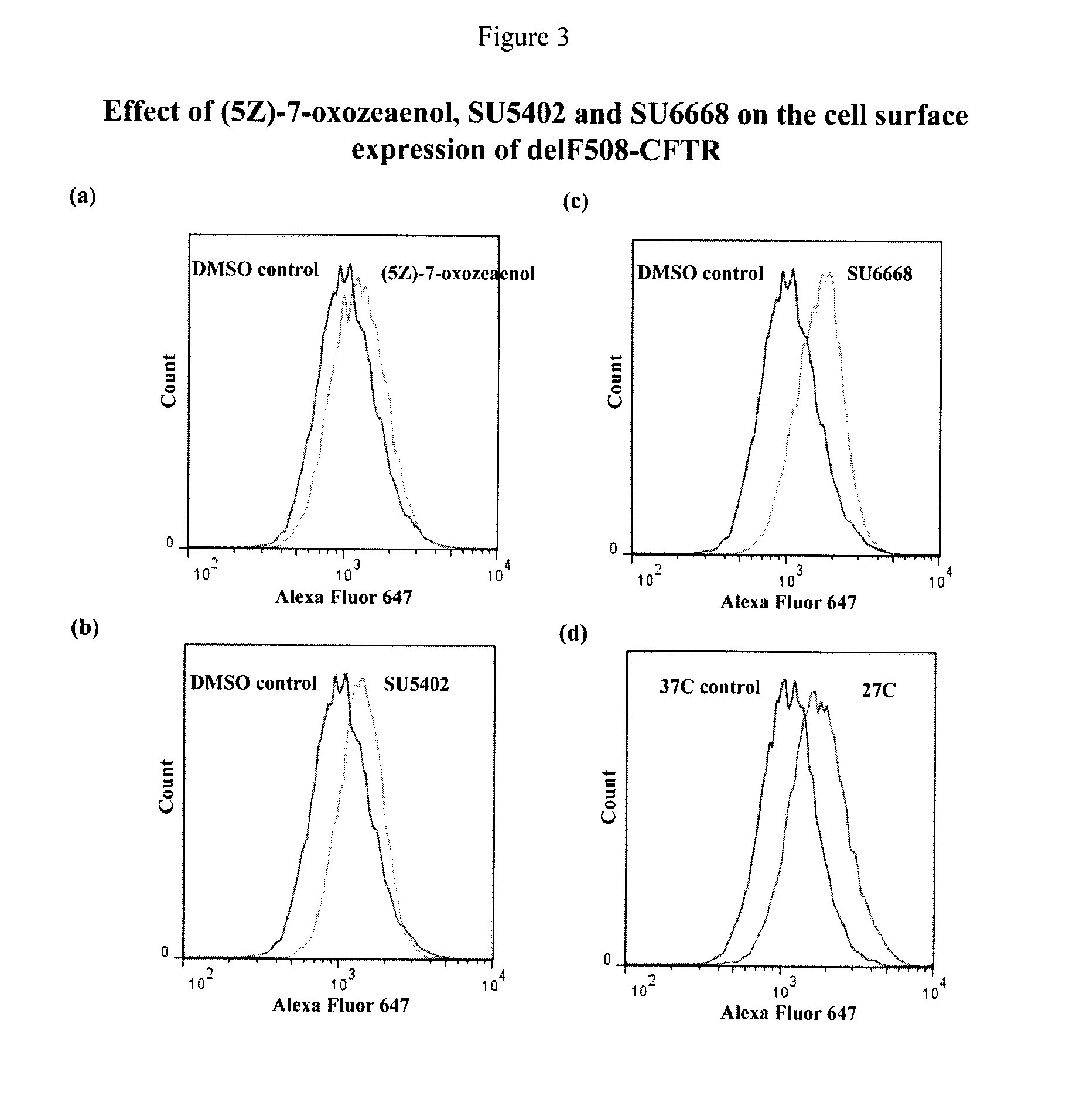Compositions and methods for treatment of cystic fibrosis and diseases associated with aberrant protein cellular processing
a technology of aberrant protein and cellular processing, applied in the field of compositions and methods for treating aberrant protein cellular processing, can solve the problems of reducing the activity of chloride channels, not addressing primary defects, etc., and achieve the effect of restoring trans-membrane transport capacity
- Summary
- Abstract
- Description
- Claims
- Application Information
AI Technical Summary
Benefits of technology
Problems solved by technology
Method used
Image
Examples
Embodiment Construction
Definitions
[0029]“CF” refers to cystic fibrosis (mucoviscidosis). “CFTR” refers to the Cystic Fibrosis Transmembrane Conductance Regulator. In one embodiment the CFTR is mammalian CFTR or, more specifically, human CFTR, a 1,480 amino acid protein.
[0030]“CFTR” refers to the Cystic Fibrosis Transmembrane Conductance Regulator, whether wild type or mutant.
[0031]“Wild type” refers to a native or non-mutant sequence, typically a protein sequence. Wild type CFTR refers to native CFTR, and particularly native mammalian CFTR (mCFTR) or human CFTR (hCFTR) that has normal chloride channel activity in a membrane. “Wild type sequence” refers to a native primary amino acid sequence. For example, the wild type polypeptide sequence of human CFTR is provided under accession number P13569. “Wild type conformation” refers to the normal, native secondary and tertiary structure of a specific protein. For example, the CFTR structure for the wild type NBD1 and NBD2 domains are at the following PDB IDs: 1...
PUM
| Property | Measurement | Unit |
|---|---|---|
| Electrical conductance | aaaaa | aaaaa |
| Composition | aaaaa | aaaaa |
Abstract
Description
Claims
Application Information
 Login to View More
Login to View More - R&D
- Intellectual Property
- Life Sciences
- Materials
- Tech Scout
- Unparalleled Data Quality
- Higher Quality Content
- 60% Fewer Hallucinations
Browse by: Latest US Patents, China's latest patents, Technical Efficacy Thesaurus, Application Domain, Technology Topic, Popular Technical Reports.
© 2025 PatSnap. All rights reserved.Legal|Privacy policy|Modern Slavery Act Transparency Statement|Sitemap|About US| Contact US: help@patsnap.com



